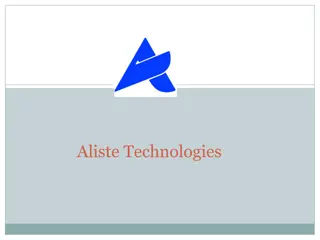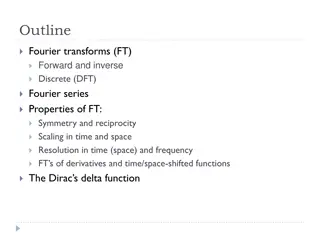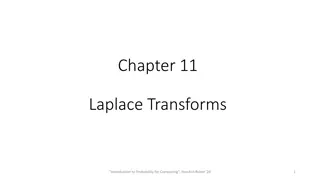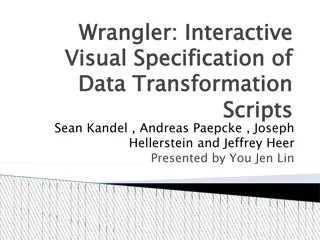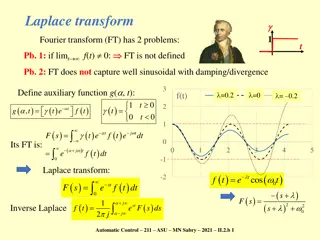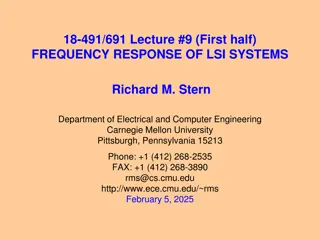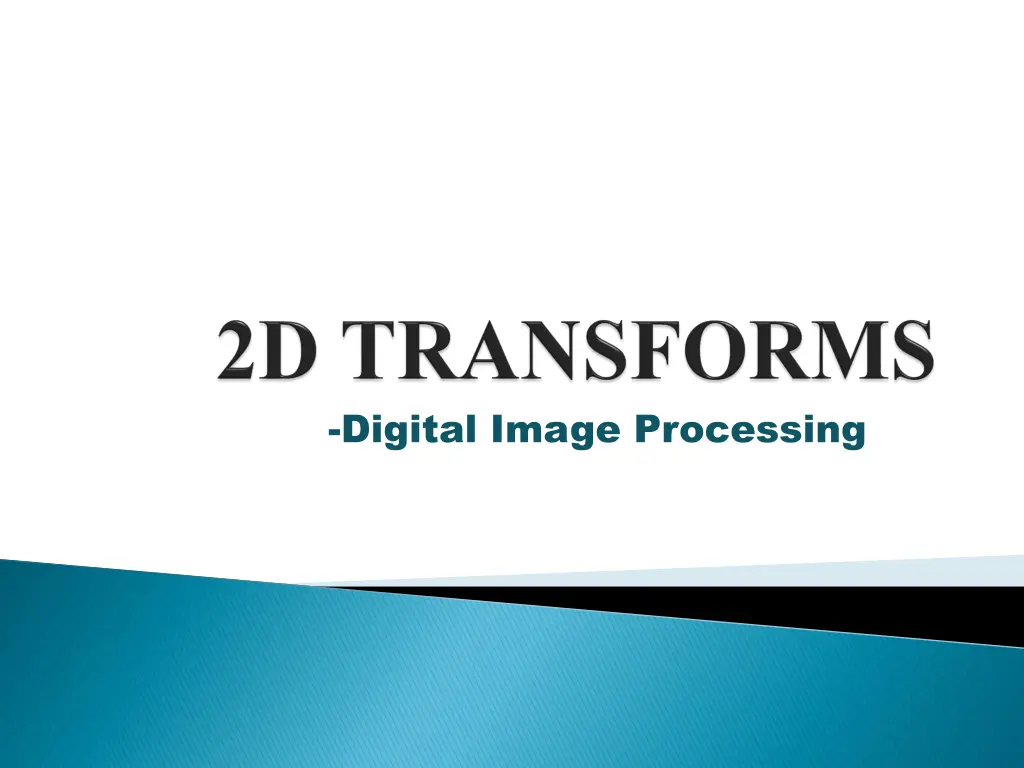
Understanding Image Transformation Techniques in Digital Processing
Explore the fundamentals of image transformations in digital processing, including translation, rotation, and scaling. Learn how these techniques play a vital role in computer graphics to manipulate and reposition visual elements effectively.
Download Presentation

Please find below an Image/Link to download the presentation.
The content on the website is provided AS IS for your information and personal use only. It may not be sold, licensed, or shared on other websites without obtaining consent from the author. If you encounter any issues during the download, it is possible that the publisher has removed the file from their server.
You are allowed to download the files provided on this website for personal or commercial use, subject to the condition that they are used lawfully. All files are the property of their respective owners.
The content on the website is provided AS IS for your information and personal use only. It may not be sold, licensed, or shared on other websites without obtaining consent from the author.
E N D
Presentation Transcript
Transformation means changing some graphics into something else by applying rules. We can have various types of transformations such as translation. scaling up or down. Rotation. Shearing. When a transformation takes place on a 2D plane, it is called 2D transformation. Transformations play an important role in computer graphics to reposition the graphics on the screen and change their size or orientation.
To perform a sequence of transformation such as translation followed by rotation and scaling, we need to follow a sequential process, -Translate the coordinates, -Rotate the translated coordinates, and then -Scale the rotated coordinates to complete the composite transformation.
A translation moves an object to a different position on the screen. You can translate a point in 2D by adding translation coordinate ( tx, ty) to the original coordinate X,YX,Y to get the new coordinate X ,Y X ,Y .
From the above figure, you can write that X = X + Y = Y + X = X + t tx x Y = Y + t ty y The pair (tx, ty) is called the translation vector or shift vector. The above equations can also be represented using the column vectors. P=[X][Y]P=[X][Y] p' = [X ][Y ][X ][Y ] T = [tx][ty][tx][ty] We can write it as P = P + T P = P + T
Rotation:- In rotation, we rotate the object at particular angle theta theta from its origin. From the following figure, we can see that the point PX,YX,Y is located at angle from the horizontal X coordinate with distance r from the origin. Let us suppose you want to rotate it at the angle . After rotating it to a new location, you will get a new point P X ,Y
Using standard trigonometric the original coordinate of point PX,YX,Y can be represented as X=rcos ......(1)X=rcos ......(1) Y=rsin ......(2)Y=rsin ......(2) Same way we can represent the point P X ,Y X ,Y as x =rcos( + )=rcos cos rsin sin .......(3) y =rsin( + )=rcos sin +rsin cos .......(4) Substituting equation 11 & 22 in 33 & 44 respectively, we will get x =xcos ysin x =xcos ysin y =xsin +ycos
used. In the scaling process, you either expand or compress the dimensions of the object. Scaling can be achieved by multiplying the original coordinates of the object with the scaling factor to get the desired result. To change the size of an object, scaling transformation is
plane transformation T2, then the result itself may be represented by a single transformation T which is the composition of T1 and T2 taken in that order. This is written as T = T1 T2. Translation Scaling Shearing Rotation Reflection If a transformation of the plane T1 is followed by a second




